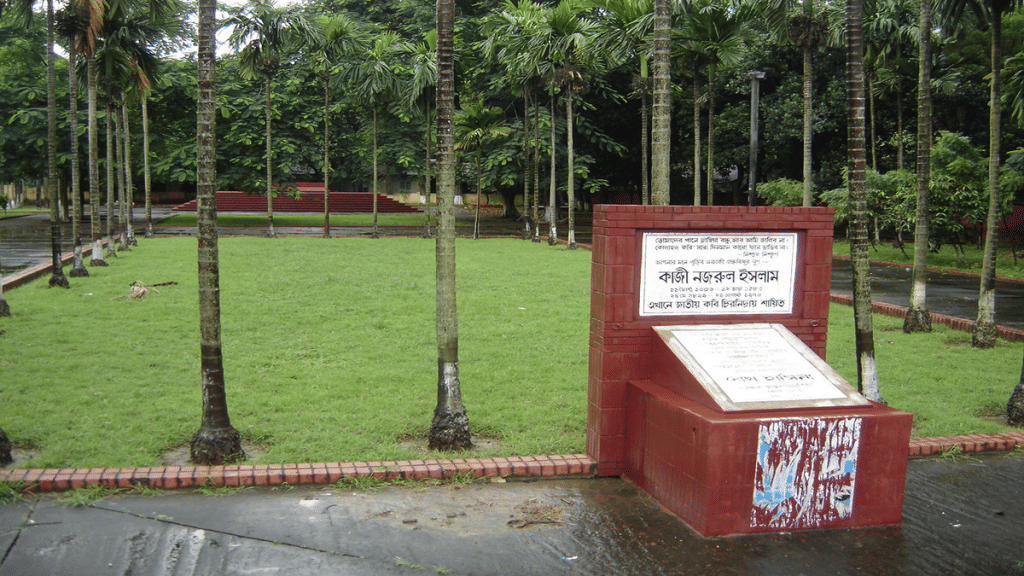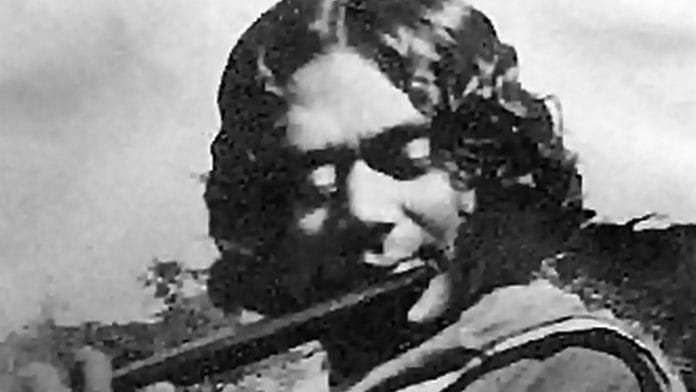At a time when the world is breaking into fragments, and India’s secular sentiment is being questioned, it is crucial to hark back to the life of Bengali poet, journalist, composer and activist Kazi Nazrul Islam. He was a remarkable literary genius and a true rebel, who on his quest for self-expression and freedom of thought, preached unforgettable lessons on pluralism, secularism and the importance of an egalitarian society. He is also Bangladesh’s national poet.
With his magazine Dhumketu (The Comet) and his legendary poem Bidrohi (Rebel), Nazrul challenged an autocratic regime and the communal hatred that came in its wake. However, as the writer refused to side with either party, he ruffled feathers on both Hindu and Muslim sides. Well-versed in both Hindu and Islamic texts, Nazrul showed a visible disdain for orthodox practices of organised religion and believed in keeping his relationship with God personal.
Nazrul’s writings were a beautiful amalgamation of Hindu and Islamic traditions. He composed bhajans and kirtans and introduced the concept of ghazals to the modern Bengali imagination—setting a clear example of art transcending religious boundaries.
In Dhumketu, he wrote on the importance of unison between Hindus and Muslims, quipping that “mosques and temples should never be used to create barriers.”
From composing Nazrul Geeti, which is as relevant to Bengali music as Rabindranath Tagore’s Rabindra sangeet, to becoming the voice of Bengali Muslim laureates in the face of Urdu domination by erstwhile West Pakistan, there is a lot that bidrohi kobi (rebel poet) Kazi Nazrul Islam did — not just for Bengal’s booming literary scene, but also for the Indian freedom struggle, women’s emancipation and religious harmony. The Telegraph’s Prasun Chaudhuri says in his article, “Nazrul was an activist who wielded his pen against colonialism, religious fundamentalism, elitism and fascism”.
Also read: Bengali poet Jibanananda Das took over Tagore’s legacy by not trying ‘too hard’
Birth of a poet and activist
Born at a time when seminal works like Bankim Chandra Chattopadhyay’s Anandamath and Vande Mataram were laying the cornerstone for a cultural renaissance in Bengal, Nazrul came into the world exactly when it needed him.
While the prefix Kazi (judge) suggests a life of comfort, Nazrul led a childhood full of hiccups and hardships. His father passed away when he was young, and his early days were spent in poverty. He started as a muezzin at a local mosque and moved on to do odd jobs to sustain his family. His family was originally touted to be from Patna, but Nazrul was born on 24 May 1899, in Churulia, near Bengal’s Asansol district and that is where he spent a good portion of his boyhood. He was also part of his uncle Bazle Karim’s travelling theatre group, which exposed him to Puranic scriptures and Hindu literary texts in Sanskrit and Bengali. When a gentleman from East Pakistan (now Bangladesh) recognised his artistic abilities, Nazrul finally had the chance to pursue his educational aspirations.
It was Nazrul’s teachers who helped carve the poetic gem within him. While known poet Kumud Ranjan Malik was one of Nazrul’s teachers, the influence of Nibaran Chandra Ghatak, a teacher connected with the revolutionary Jugantar Party, had a profound impact on his life. Interestingly, Ghatak’s aunt, Dukuribala Debi, was the first woman in Bengal to suffer imprisonment under the Indian Arms Act 1878 due to her radical opposition to colonial rule.
This initial exposure to Ghatak shaped Nazrul’s revolutionary outlook. Eventually, he decided to leave education to undergo military training in Karachi at the Bengal Double Company—a unit formed during WW1, especially for Bengali youth looking to foray into the services. During this time, he was influenced by the Bolshevik Revolution and “began to unravel and understand his role in the imperial army and how a writer was shaped by his times”, says Debjani Sengupta in her article for The Wire.
Nazrul could have had a comfortable job in the government due to his ex-serviceman status, but he chose to pursue his dreams in poetry instead. By 1919, he published his first poem, Mukti (release), in the Bangiya Mussalman Sahitya Patrika—an expression of his fluid religious beliefs and spiritual bent of mind. His first prose, Baunduler Atmakahani (Life of a Vagabond), preceded this remarkable poem. After this, Nazrul contributed most of his works to Moslem Bharat, a popular monthly magazine.
However, as the Non-Cooperation Movement gained momentum, Kazi’s poetry began to evolve, and he started to show a heightened interest in journalism. In 1922, he published Bidrohi, a poem he is known for even today. Bidrohi was one of the few poems of the time that challenged a bitterly oppressive regime in a nuanced and sensitive manner. It even surpassed Tagore’s Shonar Tori in terms of popularity –Nazrul stormed into Tagore’s house and jokingly said, “Gurudev, I have come to kill you off”.
Even though Nazrul often challenged Tagore’s domination in the literary space through his articles in Kallol, a Left-leaning magazine, both laureates shared a deep respect for each other and extended support where necessary.
He then segued into journalism, starting the revolutionary Dhumketu magazine in 1922, which was so popular that people would queue for days to grab a copy.
Despite its ability to spark enthusiasm, Dhumketu promoted communal harmony. It was a profoundly analytical magazine that challenged oppression with cold, hard facts and was praised by both Rabindranath Tagore and Sarat Chandra Chattopadhyay. Chattopadhyay “enjoined Nazrul to speak the truth irrespective of whether it was against a friend or an enemy,” says Basudha Chakravarty in her biography, Kazi Nazrul Islam. Tagore, too, in poetic praise, asked the comet to “startle into wakefulness those who are still semi-conscious with its bold challenge.”

Also read: Dilip Kumar Roy, the Cambridge-educated elite who added melody to India’s freedom movement
Nazrul’s relationship with religion
Controversy’s favourite child, Nazrul set his first example of communal harmony through his marriage to Brahmo Samaj’s Pramila Sengupta on 25 April 1924, which irritated flag bearers of both faiths. Debjani Sengupta, in her article for The Wire says that it was “Nazrul’s first confrontation with the orthodoxies of both Hinduism and Islam.” A Muslim man binding himself in matrimony with a Hindu woman was rare at the time, but Nazrul’s love for Pramila surpassed religious hurdles. Nazrul’s secular spirit is evident in the choice of his children’s names – Kazi Sabyasachi, Krishna Mohammed and Kazi Aniruddha.
In one article, Nazrul wrote, “Slaves have no religion. Youths must give the first place to the fight for life and must not be inhibited by religious injunctions”.
A proponent of both Shaktism (a form of Hinduism centred around goddess Shakti) and Islamic principles, Nazrul once said, “Open your heart — within you dwell all the religions. All the prophets — your heart. Is the universal temple…. Why do you search for God in vain? Within the skeletons of dead scriptures. When he smilingly resides in your immortal heart?”
Influenced by Kabir, Nanak and Akbar’s Din-i-ilahi, Kazi Nazrul Islam preached and practised a form of religious pluralism and syncretism that is unheard of even today but is a particular need of the hour.
In 1972, on a special invitation from the Bangladesh government, Kazi Nazrul Islam and his family permanently shifted base to Dhaka. Nazrul was eventually diagnosed with Pick’s Disease (an extremely rare brain disorder that is similar to Alzheimer’s), which claimed his life on 29 August 1976. Thousands were aggrieved by his death, and Bangladesh declared two days of national mourning to commemorate, for one last time, Kazi Nazrul Islam.






